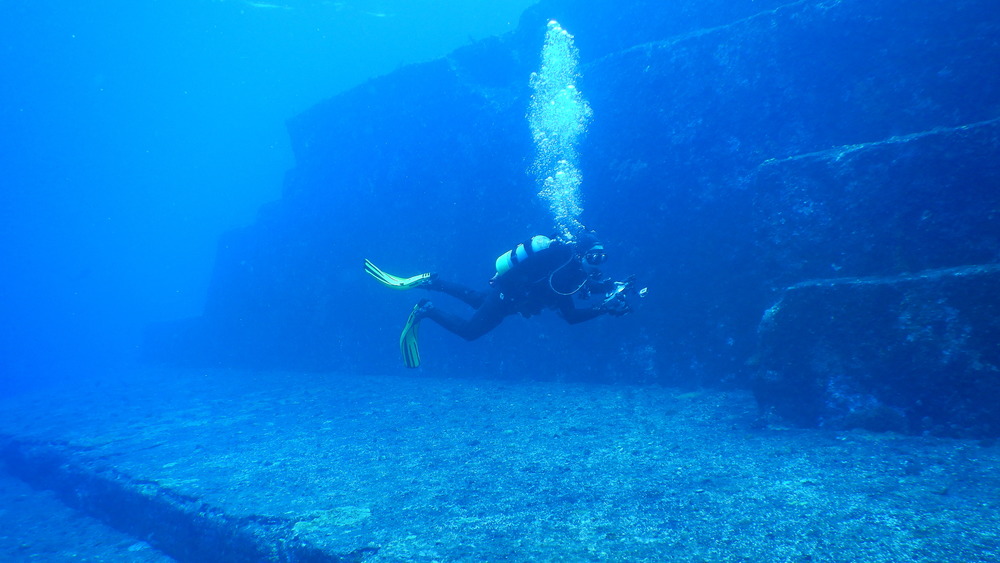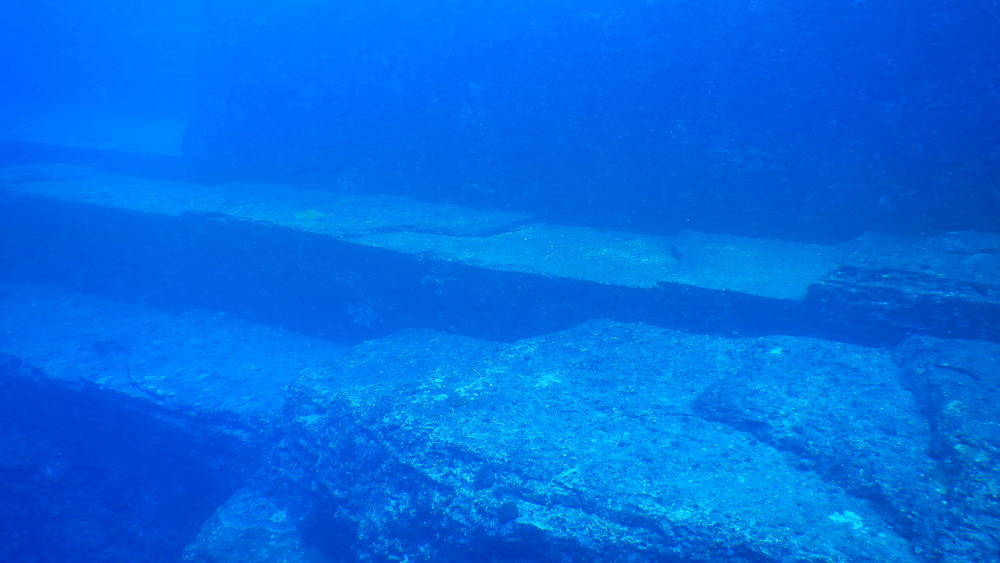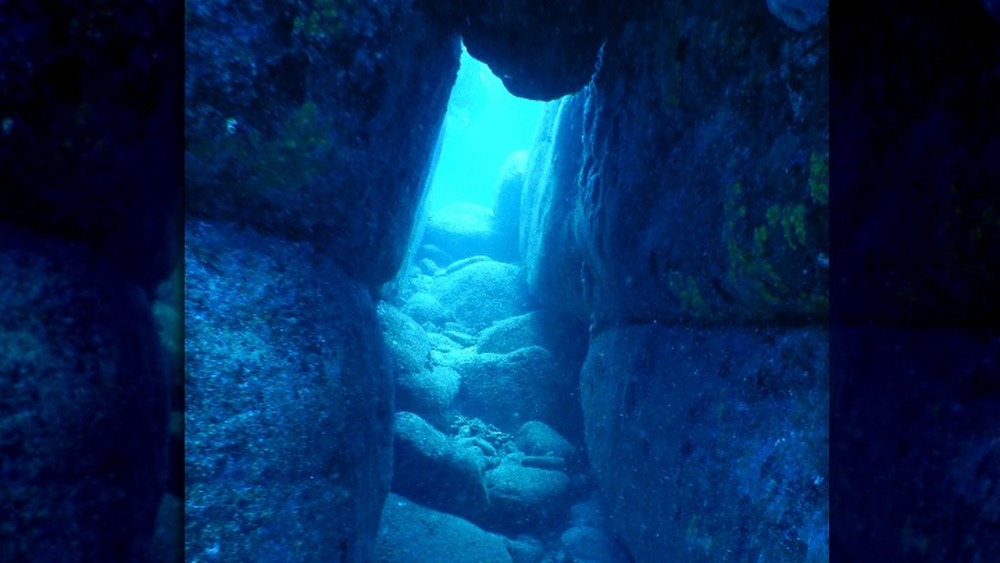The Truth About Yonaguni Monument, Japan's Ancient Underwater Pyramid
Stories of the "lost island of Atlantis" have circulated ever since the Greek philosopher Plato mentioned them in his dialogues, Timaeus and Critias, circa 360 BCE. It's an appealing tale, for sure: a time-lost, advanced civilization that sunk into the ocean and carried with it secrets untold and unknown. Nearly 9,000 years prior, Plato estimated — way, way before DC's Snyder Cut gave Jason Momoa some extra screen time to flex his workout routine — the Atlanteans grew war-like and had to be eliminated. Also in the queue to be drowned by a deity, as 200 different versions of the Biblical flood story recount (per Ark Encounter)? All life on Earth. Babylonian, Aztec, Chinese, Buddhist, Hindu, Norse, Aboriginal, Hawaiian, Egyptian, and more: all of these societies and traditions tell this same flood story, as PBS explains.
And indeed, as Curiosmos outlines, there are indications of water damage around the base of the Sphinx, despite conventional wisdom placing its construction at about 2500 BCE. If so, the Sphinx would have been built by the end of the Pleistocene Epoch (Ice Age), about 11,700 BCE, per Live Science, when lots of ice melted. Sound familiar? Yeah, that's about when Plato said a flood sunk Atlantis. Dwarka, India (per Flynote), Atlit-Yam off the coast of Israel (per the Times of Israel), Pavlopetri south of Greece (per The Guardian): these are just a few more examples of ancient, sunken cities.
And on the eastern side of the Asian continent? We've got Yonaguni Monument near Okinawa, Japan.
A potentially man-made pyramid with tools and roads from the last Ice Age
Back in 1986, local diver Kihachiro Aratake found what would be dubbed "Yonaguni Monument" west of Okinawa, Japan, off the coast of the tiny island of Yonaguni (Okinawa is a chain of islands). Officially Yonaguni-jima Kaitei Chikei, the site is twice as close to Taiwan and its capital, Taipei, at 120 kilometers (75 miles), rather than Naha, Okinawa's main city. It's never been acknowledged by the Japanese government nor the prefectural, Okinawan government as an official cultural property or national heritage site, and there's been no preservation nor research. Instead, as National Geographic states, such efforts have been left to "professors and other interested individuals."
Naturally, Yonaguni Monument has become a hotspot for divers and amateur mystery solvers, as sites like World Adventure Divers illustrates. Pictures show uncannily straight-lined, right-angled stone geometry composing the kind of stepped pyramids seen at Mesoamerican sites like Chichén Itzá, Tenochtitlan, and Cholula in Mexico. There are channels like roads, and steps along their interior, as well as evidence of "a drainage system, a loop road, a retaining wall, a drinking water pool, holes for pillars," and more. There are even, as Atlas Obscura says, tools, pottery, and fireplaces.
If man-made, the site would date back to at least 2,500 BCE. Realistically, though, it would be closer to (you guessed it) the end of the last Ice Age, when there was still a land bridge between Yonaguni Island and Taiwan.
A political 'hands-off' zone that might just be basic sandstone formations
Part of the reason for the government's reluctance to take responsibility for Yonaguni Monument and declare it man-made, presumably, has to do with the accepted explanation for the site. Robert Schoch, professor of science and mathematics at Boston University, said, "It's basic geology and classic stratigraphy for sandstones, which tend to break along planes and give you these very straight edges, particularly in an area with lots of faults and tectonic activity." This explanation, though, is far from satisfying, especially given the existence of human activity at the site.
Realistically, (and realistically cynical), governmental non-involvement at Yonaguni also derives from political optics. Given the proximity of Yonaguni to Taiwan, Taiwan's strained relationship with China, China's tenuous relationship with Japan, plus the history of Okinawa (formerly the Ryukyu Kingdom) as a conquered region in the 17th century (per Visit Okinawa), it makes sense why both national and local governments want to stay hands off. Or rather, why they'd let outside parties do enough informal archaeological work for them before getting on board with any official declaration.
Until then, divers can jump in the water and explore Yonaguni at depths of a mere 6 meters (20 feet) to 30 meters (100 feet), as stated on Ancient Origins. There are, in fact, five different sub-locations waiting to be explored that comprise the entirety of Yonaguni-jima Kaitei Chikei. Some ancient mysteries have been solved, sure, but Yonaguni Monument definitely isn't one of them.


